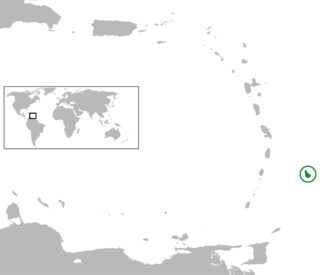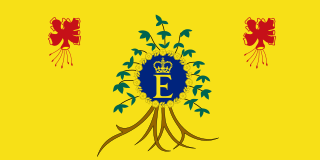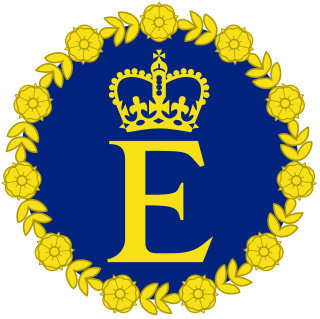Contents
This is a list of flags used in Barbados.
This is a list of flags used in Barbados.
| Flag | Date | Use | Description |
|---|---|---|---|
 | 1966–present | Flag of Barbados | Tricolour of two bands of ultramarine separated by a golden middle band. The ultramarine represents the sky and the ocean, the gold represents the sand. A black trident head is centred within the golden band. |
 | 1966–present | Flag of Barbados (vertical) |
| Flag | Date | Use | Description |
|---|---|---|---|
 | 2021–present | Standard of the president of Barbados | A flag with dark blue field bearing the coat of arms of Barbados and a golden trident surrounding by wreath of laurels in the center. |
 | 1966–present | Standard of the prime minister of Barbados | A flag diagonally divided in yellow and blue by black-white rope, and bearing the coat of arms of Barbados on a white disc surrounding by knocked rope. |
| Flag | Date | Use | Description |
|---|---|---|---|
| Link to file | Barbados Defence Force (BDF) | A green flag with the BDF emblem in the center. | |
 | Naval ensign of Barbados | A white ensign with the flag of Barbados in the canton |
| Flag | Date | Use | Description |
|---|---|---|---|
 | 1870–1966 | Flag of the Colony of Barbados | A British Blue Ensign with an emblem of Barbados |
 | 1958–1962 | Flag of the West Indies Federation | |
 | 1870–1966 | Flag of the governor of Barbados | A Union Jack with an emblem of Barbados in the centre surrounded by a laurel wreath |
 | 1870–1966 | Ensign of Barbados | A British Red Ensign with an emblem of Barbados |
 | 2016 | Barbados 50th Anniversary of Independence banner | |
 | 1975–2021 | Personal Standard of Queen Elizabeth II in Barbados | A bearded fig tree (with the leaves coloured blue) in the centre and a Pride of Barbados flower in each of the top corners on a yellow field. A blue disc of the letter "E" crowned surrounded by a garland of gold roses defaces the flag. |
 | 1966–2021 | Standard of the governor-general of Barbados | A lion standing on a crown, on a blue field, with the words "Barbados" |

The hammer and sickle is a communist symbol representing proletarian solidarity between agricultural and industrial workers. It was first adopted during the Russian Revolution at the end of World War I, the hammer representing workers and the sickle representing the peasants.

The flag of Barbados was designed by Grantley W. Prescod and was officially adopted to represent Barbados at midnight on 30 November 1966, the day the country gained independence.

The coat of arms of Barbados was adopted on 14 February 1966, by a royal warrant of Queen Elizabeth II. The coat of arms of Barbados was presented by the Queen to the then President of the Senate of Barbados, Sir Grey Massiah. Like other former British possessions in the Caribbean, the coat of arms has a helmet with a national symbol on top, and a shield beneath that is supported by two animals.

Barbados competed at the 2004 Summer Olympics in Athens, Greece, from 13 to 29 August 2004. This nation marked its ninth appearance at the Olympics, except the 1980 Summer Olympics in Moscow because of the United States boycott.

Saint Andrew's Day, also called the Feast of Saint Andrew or Andermas, is the feast day of Andrew the Apostle. It is celebrated on 30 November. Saint Andrew is the disciple in the New Testament who introduced his brother, the Apostle Peter, to Jesus, the Messiah.
The National Pledge of Barbados is as follows

The following is an alphabetical list of topics related to the nation of Barbados.

The Queen's Personal Flag for Barbados was the personal standard of Elizabeth II, in her role as Queen of Barbados for use while in Barbados. It was first used when the Queen visited Barbados in 1975. The Queen's representative, the governor-general of Barbados, had their own standard. The flags of both the Queen and the governor-general were retired when Barbados ceased to be a Commonwealth realm; becoming a republic on 30 November 2021.

Barbados first competed at the Summer Olympic Games in 1968, and has participated in each Games since, with the exception of the 1980 Summer Olympics when Barbados joined the American-led boycott and has never competed in the Winter Olympic Games. The country's only Olympic medal is a bronze won by sprinter Obadele Thompson in the men's 100 metres at the 2000 Summer Olympics.

The monarchy of Barbados was a system of government in which a hereditary monarch was the sovereign and head of state of Barbados from 1966 to 2021. Barbados shared the sovereign with the other Commonwealth realms, with the country's monarchy being separate and legally distinct. The monarch's operational and ceremonial duties were mostly delegated to her representative, the governor-general of Barbados.

The following outline is provided as an overview of and introduction to Barbados:

A Barbados passport is a travel document issued to citizens of Barbados, in accordance with Citizenship Act from 1978, the Immigration Act from 1997, and the Barbados Constitution, for the purpose of facilitating international travel. It allows the bearer to travel to foreign countries in accordance with visa requirements, and facilitates the process of securing assistance from Barbados consular officials abroad, if necessary.

Queen Elizabeth II had a variety of flags to represent her personally and as head of state of several independent nations around the world. They were usually used on any building, ship, car, or aircraft where she was present.
National emblems of Barbados are the symbols that are used in Barbados to represent the independent nation. The emblems reflect different aspects of its cultural life and history.

Barbados competed at the 2016 Summer Olympics in Rio de Janeiro, Brazil, from 5 to 21 August 2016. This was the nation's twelfth appearance at the Summer Olympics, with the exception of the 1980 Summer Olympics in Moscow, because of its partial support to the United States-led boycott.